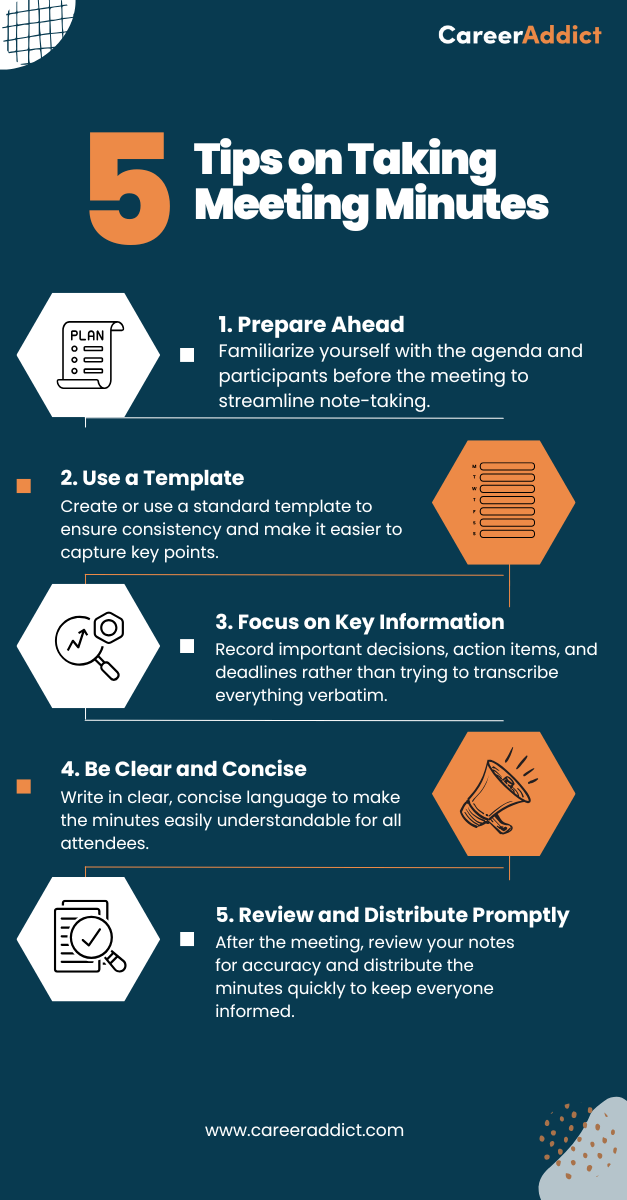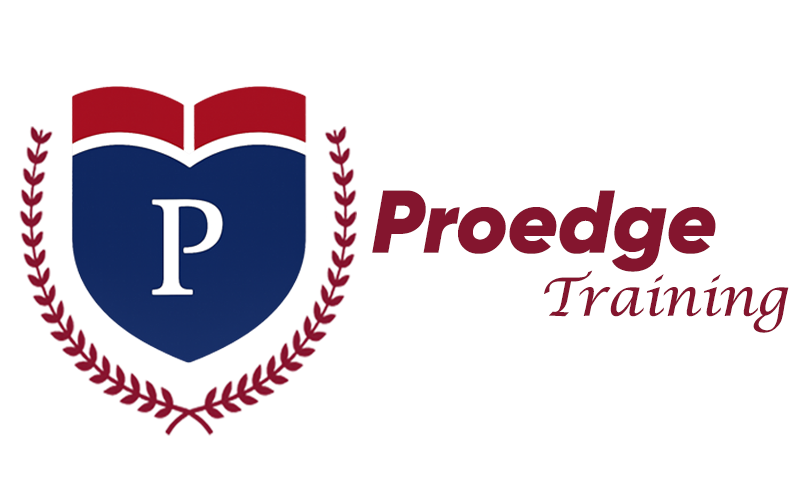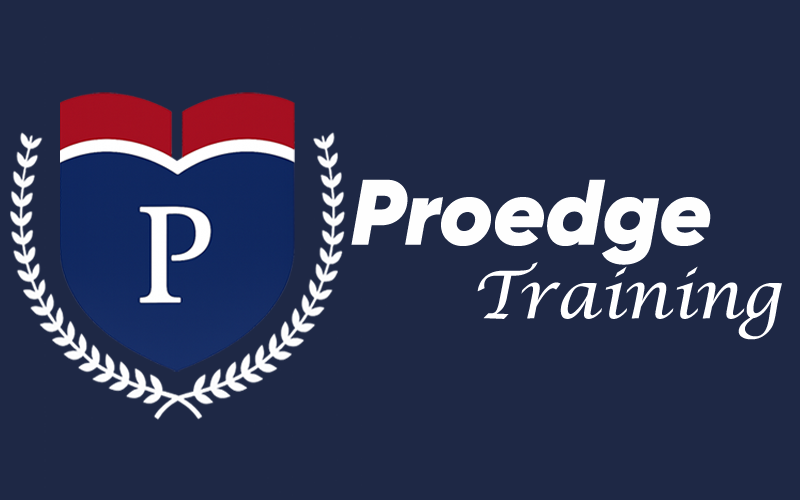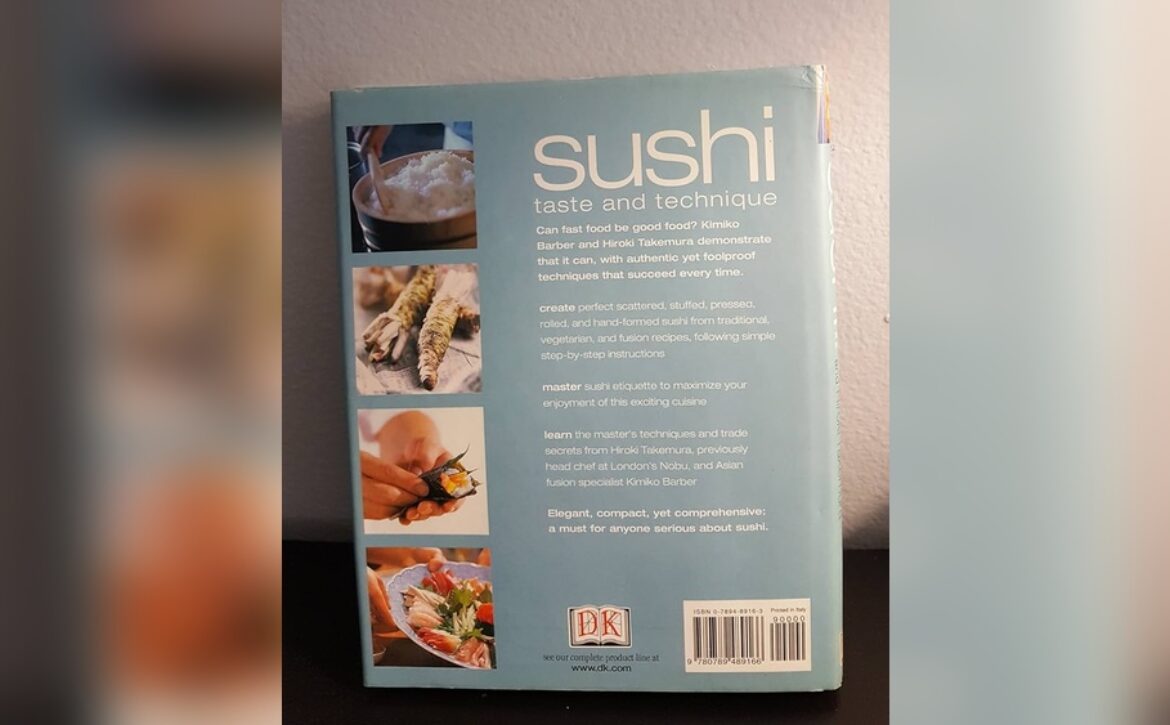
Minute Taking Tips And Techniques: Master the Art
Minute taking can transform meetings. It captures essential details and decisions.
In today’s fast-paced work environment, effective minute taking is crucial. It ensures everyone stays informed and can revisit key points later. Whether you’re new to minute taking or seeking to improve, understanding techniques can make a difference. Good minutes help in organizing thoughts and tracking progress.
They also serve as a record for future reference. With clear tips and techniques, minute taking becomes straightforward. Learn how to capture discussions accurately and efficiently. Enhance your skills to create concise and useful minutes. Explore strategies to ensure your minutes are clear and valuable. Dive into the art of minute taking and discover how it can benefit your meetings.
Preparation Essentials
Effective minute taking starts before the meeting begins. Preparation is key to capturing clear and concise meeting minutes. Proper organization and planning help in summarizing discussions accurately. With the right preparation, documenting techniques become smoother, and note-taking strategies more efficient. Let’s explore the essentials to ensure you’re ready for any meeting.
Gathering Relevant Materials
Preparation for effective minute taking involves collecting all necessary materials beforehand. This ensures that you can focus on capturing the essence of the meeting without interruptions. Here’s a list of materials that can aid in your meeting preparation:
- Agenda: Understand the topics to be discussed. This helps prioritize what to record.
- Attendee List: Know who is present. This aids in documenting contributions accurately.
- Previous Meeting Minutes: Review past discussions. It ensures continuity and aids in record keeping.
- Reference Documents: Gather any reports or documents relevant to the meeting. They provide context and enhance documentation techniques.
Organizational skills are crucial. Use a table to organize your materials:
| Material | Description |
|---|---|
| Agenda | List of topics and time allocation |
| Attendee List | Names and roles of participants |
| Previous Minutes | Summary of past meetings |
| Reference Documents | Reports and supplementary materials |
Having these materials ready makes note-taking more efficient and enhances your ability to summarize discussions effectively.
Choosing The Right Tools
Tools play a vital role in ensuring effective minute taking. The right tools streamline the process and enhance your ability to document action items and discussions. Consider these options when selecting your tools:
- Digital Note-Taking Apps: Tools like Evernote or OneNote provide easy access and organization of notes.
- Audio Recorders: Use recorders for accurate documentation. They are valuable for revisiting complex discussions.
- Templates: Create or download templates for meeting minutes. They ensure consistency and improve concise writing.
- Cloud Storage: Platforms like Google Drive or Dropbox help keep records accessible and secure.
Choosing tools wisely enhances your organizational skills and ensures efficient record keeping. Here’s a comparison of tools:
| Tool | Benefits |
|---|---|
| Digital Apps | Easy access, organization, and sharing |
| Audio Recorders | Accurate documentation of discussions |
| Templates | Consistent and structured note-taking |
| Cloud Storage | Secure and accessible record keeping |
These tools are essential for effective minute taking. They simplify the process and help in summarizing discussions accurately.

Active Listening Skills
Effective minute-taking is an essential skill in any professional setting. It involves accurately capturing discussions, decisions, and action points during meetings. Active Listening Skills play a crucial role in this process. They allow you to focus on the speaker, understand key points, and organize information efficiently. By honing these skills, you improve your ability to produce clear and concise meeting documentation.
Focusing On Key Points
Active Listening Skills require you to identify and focus on key points during meetings. This ensures that your meeting documentation is both accurate and useful. Here are some strategies to help you:
- Prioritize Information: Not every detail is necessary. Focus on decisions, action items, and critical discussions.
- Use Summarizing Techniques: Condense long discussions into brief summaries, capturing the essence without unnecessary detail.
- Employ Note-Taking Strategies: Develop a consistent method for taking notes. Use bullet points, abbreviations, or symbols to speed up the process.
Consider creating a table to organize your notes:
| Topic | Key Points | Action Items |
|---|---|---|
| Project Update | Timeline extension approved | Submit revised plan by Friday |
| Budget Review | Additional funds allocated | Prepare new budget proposal |
By focusing on key points, your minutes will reflect the essence of the meeting, aiding in effective meeting facilitation and organization skills.
Avoiding Distractions
Avoiding distractions is vital for active listening and effective minute-taking. Here are some tips to help you maintain focus:
- Minimize External Distractions: Choose a quiet location if possible. Turn off notifications on your devices.
- Maintain Eye Contact: Engaging with speakers through eye contact can help you stay focused and attentive.
- Practice Time Management: Allocate specific times for note-taking and summarizing discussions. This prevents last-minute rushes.
Here’s a simple checklist to help you avoid distractions:
- Find a comfortable seating position.
- Keep necessary materials close by.
- Remind yourself of the meeting’s purpose regularly.
By avoiding distractions, you enhance clarity in communication and ensure concise writing techniques are applied to your meeting documentation. This leads to more effective minutes and better organization skills.
Structuring Minutes
Taking minutes during meetings is crucial for capturing the essence of discussions and decisions. Structuring minutes effectively ensures clarity and comprehensiveness. Well-structured minutes facilitate easy referencing and understanding for all attendees. Proper structure also enhances the professionalism of meeting documentation. Let’s explore the standard formats and essential sections for effective minute-taking.
Standard Formats
Choosing the right format can simplify the minute-taking process. There are several minute formats to consider, each serving different needs. Below are some standard formats commonly used:
- Formal Format: Ideal for official meetings and includes detailed documentation.
- Informal Format: Suitable for casual meetings, focusing on key points and action items.
- Action Minutes: Focuses primarily on decisions and tasks assigned.
- Narrative Minutes: Offers a detailed account of discussions.
The choice of format depends on the agenda items and the audience. Formal formats are ideal for board meetings, while informal formats work for team catch-ups. Minute templates can help maintain consistency and professionalism across different meetings.
| Format | Description |
|---|---|
| Formal | Detailed, structured, and suitable for official records. |
| Informal | Less structured, focuses on key points and actions. |
| Action | Highlights decisions and tasks, quick to review. |
| Narrative | Detailed account, captures the full discussion. |
Sections To Include
Professional minutes must include specific sections to ensure completeness. Here are key sections to incorporate:
- Header: Include meeting title, date, time, and location.
- Attendees: List all participants and absentees.
- Agenda Items: Outline topics discussed. This provides a framework for the meeting.
- Key Points Summary: Summarize major discussions and conclusions.
- Action Items: Clearly state tasks assigned, responsible persons, and deadlines.
- Next Meeting: Note the date and time for future meetings.
Including these sections ensures that meeting minutes are comprehensive and useful. Effective minute taking captures all significant details without unnecessary information. This approach ensures that the meeting documentation serves as a reliable reference for all stakeholders involved.

Effective Note-taking Methods
Effective note-taking methods are crucial for creating professional minutes during meetings. These techniques ensure that meeting documentation is both concise and comprehensive. Minute taking requires summarizing discussions accurately, allowing participants to revisit key points easily. Choosing the right note-taking strategies can help in crafting effective minutes that serve as reliable references. Let’s explore some practical methods to enhance your documentation techniques.
Bullet Points Vs. Paragraphs
Choosing between bullet points and paragraphs in meeting minutes can impact the clarity of your documentation. Bullet points provide a structured format that highlights key points, helping readers focus on essential information quickly. This method is particularly useful for summarizing discussions and delivering concise notes. Here’s a comparison to consider:
- Bullet Points:
- Quick to read and easy to scan.
- Ideal for listing ideas or decisions.
- Maintains focus on important elements.
Conversely, paragraphs offer a more detailed approach, providing context and depth. This format suits complex topics where more explanation is necessary. While paragraphs ensure comprehensive coverage, they may require more time for readers to digest.
| Method | Advantages | Disadvantages |
|---|---|---|
| Bullet Points | Concise, easy to scan | May lack detail |
| Paragraphs | Detailed, provides context | Longer to read |
Choosing the right method depends on the meeting’s complexity and the audience’s needs. Bullet points suit straightforward meeting summaries, while paragraphs are better for detailed meeting minutes.
Using Abbreviations
Incorporating abbreviations in meeting documentation can streamline the note-taking process. This technique helps in reducing the length of meeting minutes, making them more efficient. Using abbreviations is a great way to save time while ensuring concise notes. Here are some examples of how abbreviations can be used effectively:
- Commonly Used Abbreviations:
- FYI (For Your Information)
- ASAP (As Soon As Possible)
- etc. (Et cetera)
Using abbreviations demands consistency and clarity. Ensure all participants understand the abbreviations used. It’s helpful to create a list of standard abbreviations for your team to refer to during meetings. This practice enhances note-taking strategies by keeping documentation clear and professional. Effective use of abbreviations can aid in crafting concise notes without sacrificing essential details. They contribute to efficient minute taking by minimizing repetition and maintaining focus on key points. Remember, the goal is to facilitate quick understanding while preserving the integrity of meeting summaries.
Capturing Action Items
Effective minute taking is more than just jotting down notes. It’s about capturing action items that drive progress. These action items are the tasks or decisions made during a meeting. They are essential for ensuring accountability and follow-through. By focusing on capturing these items accurately, teams can improve their overall productivity and efficiency. This process requires a blend of good organizational skills for meetings and clear communication skills for minute taking. Let’s explore how to capture action items effectively.
Identifying Responsibilities
Identifying responsibilities is a key part of action items tracking. Each task must have a designated person accountable for its completion. This clarity in minutes ensures that everyone knows their role and responsibilities. Here are some techniques to help:
- Use Names Clearly: Avoid vague terms like “team” or “group”. Instead, specify names to ensure individual accountability.
- Role-Based Assignment: Assign tasks based on roles to align with each person’s expertise.
- Confirmation: During the meeting, confirm with the person that they understand and accept the responsibility.
Utilizing a table can also help in documenting responsibilities:
| Task | Responsible Person | Notes |
|---|---|---|
| Prepare Budget Report | John Doe | Review by next meeting |
| Update Website Content | Jane Smith | Focus on new product section |
By identifying responsibilities clearly, you enhance effective meeting minutes. This clarity aids in preventing misunderstandings and ensuring tasks are completed efficiently.
Setting Deadlines
Setting deadlines is crucial for time management in meetings. It helps keep projects on track and ensures tasks are completed promptly. Here are some tips for setting effective deadlines:
- Be Realistic: Assign deadlines that are achievable given the task’s complexity and resources available.
- Prioritize Tasks: Use meeting management techniques to determine which tasks need immediate attention.
- Clarify Deadline Expectations: Discuss and agree on the urgency and importance of deadlines during the meeting.
Documenting deadlines within the minutes is part of documentation best practices. This can be done using a simple format:
| Task | Deadline |
|---|---|
| Submit Project Proposal | March 15, 2024 |
| Complete Market Analysis | April 1, 2024 |
By setting clear deadlines, you enhance note-taking strategies and ensure that meetings yield actionable results. This approach not only promotes accountability but also supports effective meeting summaries.
Reviewing And Editing
Introduction paragraph about Minute Taking Tips And Techniques and Reviewing and Editing… Minute taking is a crucial skill in many professional settings. After capturing the essence of a meeting, the next step involves reviewing and editing the notes. This ensures that every detail is clear and accurate. Reviewing and editing are vital to transform raw notes into effective meeting minutes. By focusing on clarity and accuracy, you enhance the value of the meeting documentation. This process demands organizational skills and active listening skills. Let’s dive into the key aspects of reviewing and editing.
Checking For Clarity
Clarity in notes is essential for effective meeting minutes. Clear minutes help participants understand discussions and actions. Here are some strategies to improve clarity:
- Summarizing Discussions: Use concise sentences to capture the main points. Avoid lengthy explanations.
- Consistent Terminology: Use consistent terms throughout the minutes. This avoids confusion.
- Logical Flow: Organize the notes in a logical sequence. Ensure they mirror the meeting’s progression.
A table can be a useful tool for clarity:
| Technique | Benefit |
|---|---|
| Bullet Points | Highlight key points quickly. |
| Numbered Lists | Show the order of actions or decisions. |
Using clear language and a simple structure enhances the understanding of your notes. Aim for clarity to produce professional minute writing that stands out.
Ensuring Accuracy
Accuracy in minute-taking is crucial for trustworthy documentation. Here are some note-taking strategies to ensure accuracy:
- Verify Facts: Double-check names, dates, and figures for accuracy.
- Cross-reference: Compare your notes with meeting materials. This ensures consistency.
- Feedback Loop: Share drafts with colleagues. Encourage feedback for accuracy.
Organizational skills play a role in maintaining accuracy. Here’s how:
- Keep notes structured and categorized.
- Use headers and subheaders for easy reference.
- Follow meeting documentation best practices.
Accuracy enhances the reliability of your documentation techniques. It builds trust among participants and aids in decision-making. Implement these strategies to achieve accuracy in your professional minute writing.
Distributing Minutes
Effective meeting management doesn’t end with taking minutes; it continues with distributing them. The process of sharing meeting minutes ensures everyone is on the same page and can follow up on actions discussed. Proper distribution methods enhance meeting effectiveness and clarity in communication. This part of meeting management requires careful consideration of recipients and timing.
Choosing The Right Recipients
Deciding who should receive the meeting minutes is crucial for effective communication. An audience analysis can help determine the key individuals who need to be informed. Consider the following groups:
- Attendees: All participants should receive the minutes. They need the documentation to keep track of what was discussed and agreed upon.
- Stakeholders: Those who are affected by the meeting outcomes should be included. It ensures transparency and facilitates follow-up actions.
- Decision Makers: Ensure that those who make crucial decisions have access to the concise summaries.
In some cases, a table of recipients and their roles might be helpful:
| Recipient | Role | Reason for Receiving |
|---|---|---|
| John Doe | Project Manager | Needs to oversee project changes |
| Jane Smith | Team Lead | Responsible for team implementation |
Choosing the right recipients ensures that all necessary parties are informed, promoting effective note-taking and clarity in communication.
Timing For Distribution
Timing is key in distributing meeting minutes. The sooner the minutes are shared, the more effective they are in prompting follow-up actions. Here are some strategies:
- Immediate Distribution: Aim to distribute minutes within 24 hours. This helps maintain momentum and ensures actions are fresh in everyone’s minds.
- Weekly Summaries: For recurring meetings, a weekly summary can consolidate minutes. It provides a concise overview and aids in documentation strategies.
- Project Milestones: Align distribution with project milestones. This keeps everyone updated and aligns with strategic timelines.
Consider audience analysis to understand the best timing for your group. Timely distribution enhances meeting effectiveness and ensures everyone is on track with their responsibilities.

Continuous Improvement
Continuous Improvement in minute taking is crucial for efficiency and accuracy. By refining your skills, you can enhance your Meeting Minutes and ensure they remain a valuable resource for everyone involved. Minute Taking is not just about jotting down words. It’s about Effective Note-Taking and capturing the essence of discussions. As you develop your technique, it’s important to focus on improving your Time Management, Note Organization, and Documentation Techniques. This section explores key aspects of continuous improvement to help you excel in minute taking.
Seeking Feedback
Feedback Collection is a powerful tool for enhancing your minute-taking skills. Gathering input from participants helps identify areas for improvement. Consider these strategies:
- Ask for feedback: After the meeting, request feedback on the clarity and completeness of your notes.
- Use surveys: Create a simple survey to collect opinions on your Meeting Minutes.
- Peer review: Exchange notes with a colleague to gain different perspectives.
Feedback is not just about criticism. It highlights strengths and areas needing refinement. A simple table can help track and categorize feedback:
| Feedback Type | Comments | Action |
|---|---|---|
| Clarity | Unclear on key points | Improve Summarizing Discussions |
| Completeness | Missed action items | Enhance Note Organization |
Regular feedback ensures your notes serve their purpose and that you continue improving.
Adapting Techniques
Adapting Techniques is essential as every meeting is unique. Flexibility in your approach can lead to more accurate and efficient minute taking. Consider these aspects:
- Active Listening: Focus on the speaker and key points to capture essential information.
- Summarizing Discussions: Practice condensing conversations into concise statements.
- Time Management: Allocate time for reviewing and organizing notes during and after meetings.
Adaptation involves trying new methods and keeping what works best for you. Experiment with different Documentation Techniques such as:
- Bullet Points: Use for quick, easy-to-read notes.
- Mind Mapping: Visualize connections between topics.
- Digital Tools: Use apps for efficient Note Organization.
Effective Note-Taking requires a willingness to change and improve your approach continuously. Tailor your techniques to the specific needs of each meeting. Over time, you’ll refine your skills and improve your Meeting Facilitation abilities.
Frequently Asked Questions
How Do I Become A Good Minute Taker?
To become a good minute taker, focus on listening actively and capturing key points. Use clear, concise language to summarize discussions. Organize notes logically for easy reference. Practice regularly to improve speed and accuracy. Familiarize yourself with meeting protocols and terminology for better understanding.
How To Correctly Take Meeting Minutes?
Take clear, concise notes during meetings. Record key points, decisions, and action items. Use bullet points for clarity. Review and edit for accuracy afterward. Distribute minutes promptly to attendees.
What Are Three Things To Avoid In A Meeting Minute?
Avoid using jargon or complex language. Do not include irrelevant details or personal opinions. Ensure accuracy by not misrepresenting discussions or decisions.
What Makes Good Minute Taking?
Good minute taking involves capturing key points accurately and concisely. Focus on decisions, actions, and deadlines. Use clear, simple language for easy understanding. Ensure the minutes are organized and formatted consistently. Regularly review and edit for clarity and accuracy. Always keep the tone neutral and professional.
Conclusion
Minute taking can boost meeting productivity. Clear notes save time. Share minutes promptly. Everyone stays informed. Practice improves your skills. Try different techniques. Find what works best. Focus on key points. Avoid writing every detail. Use bullet points for clarity.
Record decisions and actions. Make minutes easy to read. Review and edit before sharing. Ask for feedback on your minutes. This helps refine your approach. Remember, good minutes lead to effective meetings. Stay organized and concise. Your efforts will pay off.
Enjoy the benefits of well-taken minutes.





